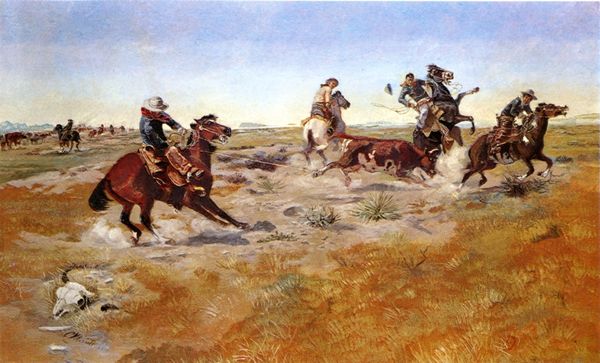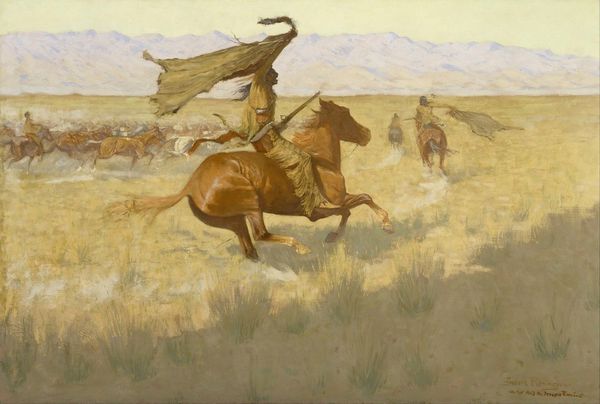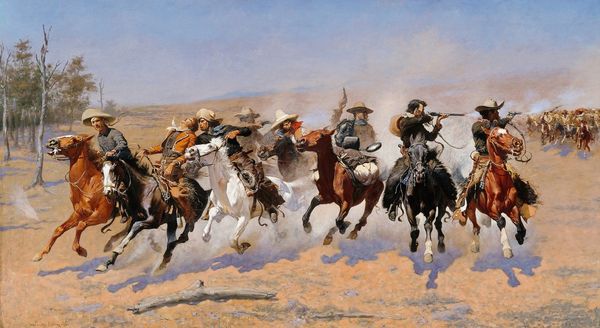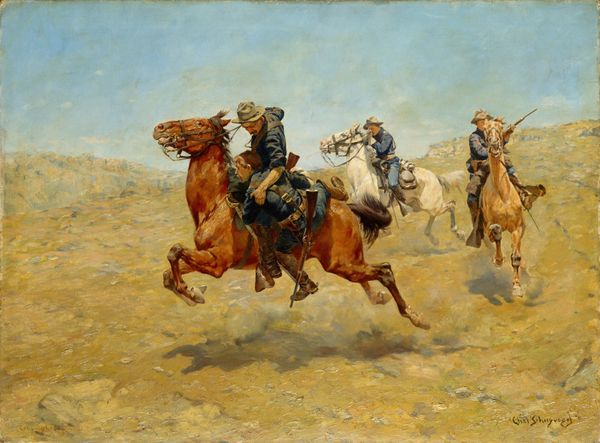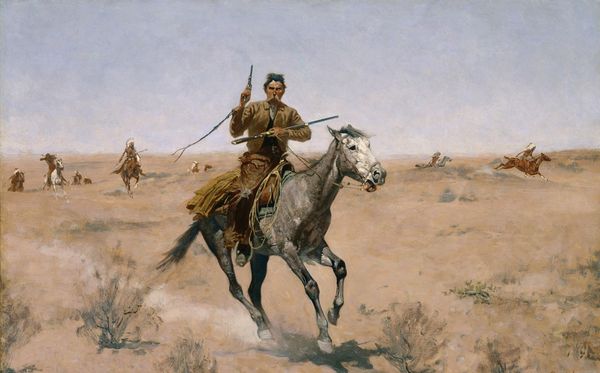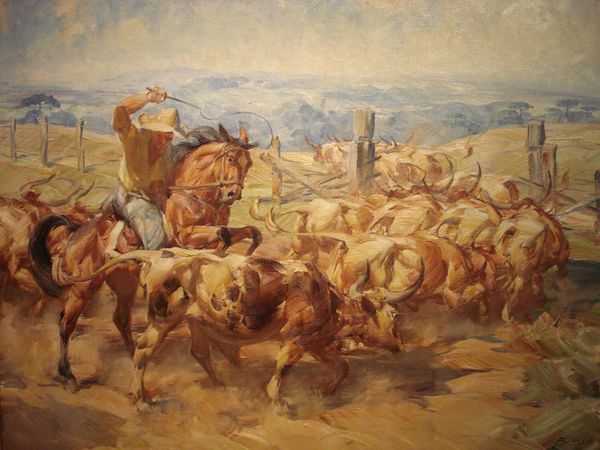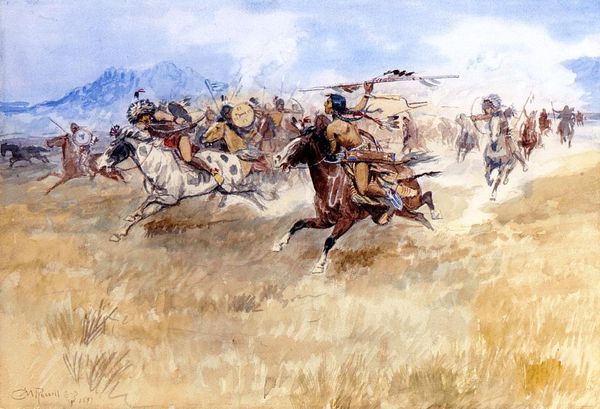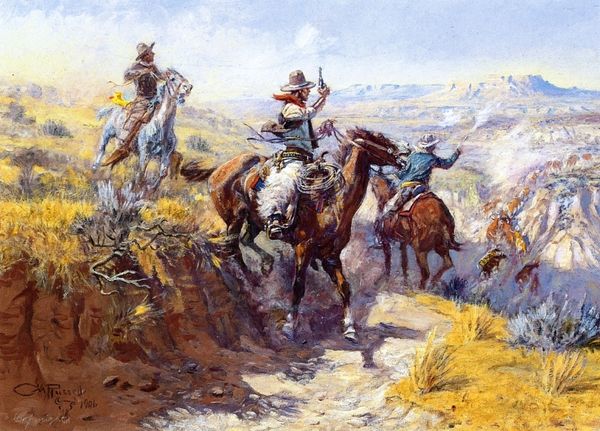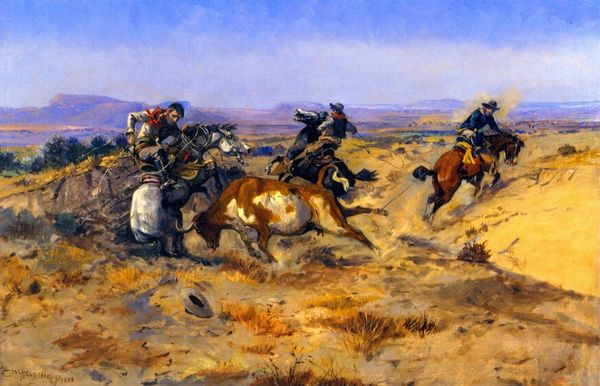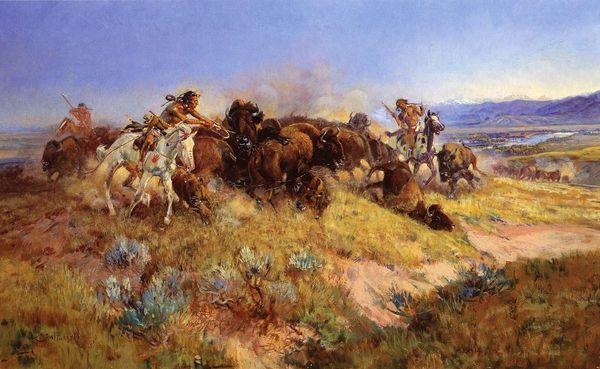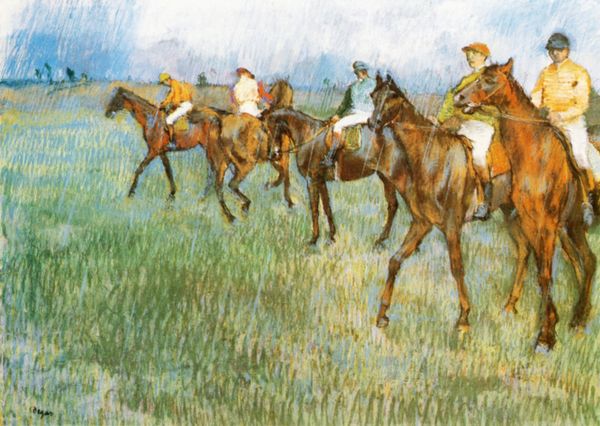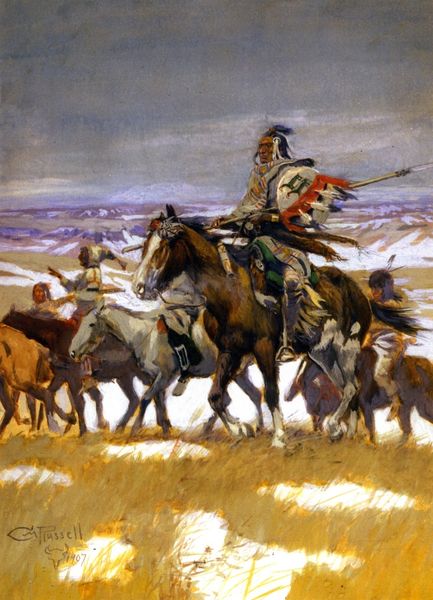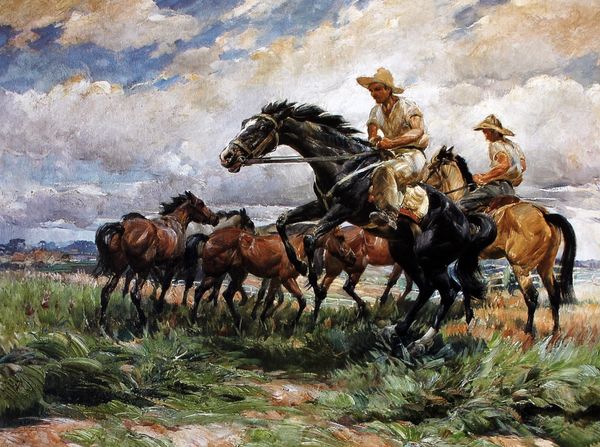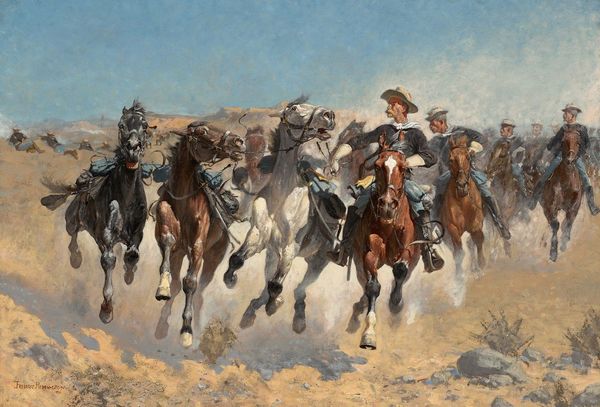
Copyright: Public Domain: Artvee
Curator: Frederic Remington's "On the Southern Plains," painted in 1907, presents a striking depiction of a troop of cavalrymen charging across a vast, open landscape. Editor: My first impression is a sense of urgent, almost frenzied movement. The low vantage point adds to the feeling that we’re caught in the midst of the action. But there's also a melancholy to the work, amplified by the arid setting. Curator: Remington’s art is so potent because it taps into archetypal symbols: the horse, the lone rider, the wide-open terrain. They speak of freedom, exploration, and the conquest of nature, themes deeply embedded in the American psyche. The palette seems limited, reflecting the reality of the western territories: browns and golds. The figures on horseback seem tiny against the immense landscape. Editor: Precisely, but let's consider that 'conquest' through a critical lens. Who is being conquered? The very depiction of these soldiers, presumably en route to subdue or displace indigenous populations, carries heavy implications. That arid landscape you noted evokes more than just 'realism'—it symbolizes loss and dispossession. Also, I question the seemingly innocuous animal skull in the lower area of the canvas. Curator: The skull can symbolize mortality, certainly, and perhaps speaks to the ephemerality of human endeavors, even those fueled by a sense of Manifest Destiny. It can signify loss, sure, or perhaps warn about the danger of human overreach. But note also the angle: It creates tension in the painting’s action and perspective. The charging horsemen are brought closer. Editor: The 'tensions' that you describe in the skull seem more about pictorial balance. Yet, this painting also perpetuates a narrative—the "Wild West"—which romanticizes a violent history. These archetypes you're referencing obscure that these weren't 'explorations' or displays of freedom, but acts of violent expansion impacting whole peoples. Curator: That's a very powerful interpretation, casting the work as not merely a visual record but an active participant in shaping historical perceptions. Still, I read the work less critically. I like to think there are nuances here beyond blind conquest and erasure, perhaps, more than anything, a longing for the simplicity of a certain kind of life. Editor: Perhaps the viewer's individual lens does all the work. Looking back at the image now, what’s striking is not what Remington intended but what it continues to reflect about how narratives of power endure and the ongoing struggle to challenge them.
Comments
No comments
Be the first to comment and join the conversation on the ultimate creative platform.
